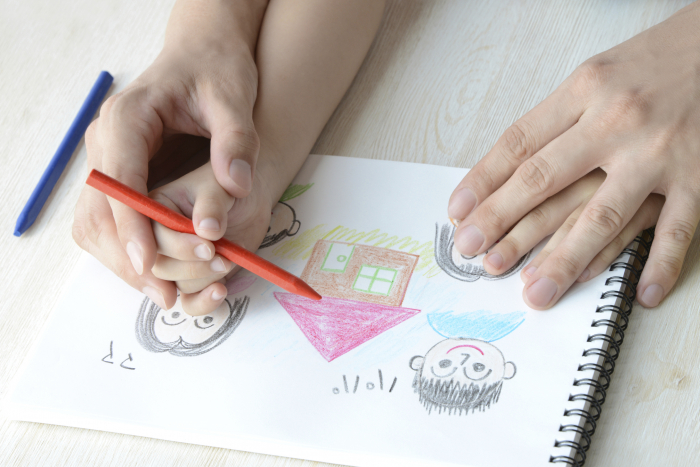Posted: August 13, 2018
When you hear the words Cerebral Palsy, often there are a variety of vague ideas or concepts that come to mind. Very rarely is there a conclusive or common definition attached to the condition, let alone the meanings of the various types of CP.
Now imagine being someone new to parenthood: having a new child, with new behaviors, new traits and characteristics, and a new personality to try to understand and build up. And you start to notice little things that just don’t seem to fit. They still can’t support their head, they don’t start babbling like other babies, they can’t roll over, or maybe they don’t even smile up at you while playing peek-a-boo. Social pressures often result in parents ignoring these signs or being shamed for being ‘too worried’ or making ‘something out of nothing.’ But these little tendencies and gaps in development can be major red flags for what may be preventable Cerebral Palsy.
We will be the first to stress that it is important to remember that children all develop at different paces, however parents are often the first to recognize when issues with development begin to arise. If your child displays some of these symptoms of Cerebral Palsy, it can sometimes feel overwhelming and inconclusive because of how challenging it can be to understand the full scope of what Cerebral Palsy is. While this blog isn’t everything there is to know about Cerebral Palsy, it is the beginning of a breakdown to better recognize the conditions, the various types and symptoms, and how living with Cerebral Palsy may affect you and your child.
Cerebral Palsy can be broken down into two main concepts: 1) a brain injury that has an effect on normal movement and 2) the specific part(s) of the body that are affected by this injury. Building upon these two factors helps with understanding how the condition is specifically present within each individual child.
Types of CP (Cerebral Palsy)
The way in which movement is affected in a child with Cerebral Palsy will be dependent upon what part of the brain was damaged before, during, or after birth as well as how severe the injury was. Below is a breakdown of the four types of Movement Issue classifications associated with a child’s Cerebral Palsy:
Spastic Cerebral Palsy
This is the most common type, making up 70-80 percent of all cases. Spastic CP is caused by damage to the brain’s motor cortex, which is what controls the body’s voluntary movements. In these cases, a child’s movements tend to appear jerky or stiff. Often elbows or wrists will appear bent, fingers will rest in a fist, thighs will “scissor,” and sometimes there will be a hoarseness or tightness in the voice. Common signs of this type of CP are awkward reflexes in one part/parts of the body, difficulty eating or drinking, and an abnormal gait.
Dyskinetic Cerebral Palsy
This type makes up roughly 10 percent of cases. Dyskinetic (or Athetoid) CP is often caused by damage to the brain’s basil ganglia, which is the regulator of voluntary movements and eye movements. Children with this case will tend to have muscle tone fluctuation (going from rigid to floppy) and involuntary movements of the face, torso, and limbs. This often causes problems with posture, eating and drinking, and speech.
Ataxic Cerebral Palsy
Ataxic CP makes up a very small percentage of all Cerebral Palsy cases and is a result of damage to the cerebellum, which controls balance and coordination. Voluntary movements in these cases can appear clumsy or jerky because of the lack of proper muscle control. Common signs are shakiness, tremors, problems with perception, and instability while walking.
Mixed Cerebral Palsy
This type makes up less than 10 percent of CP cases and is characterized by damage to the brain in more than one location, resulting in the development of symptoms that are attributed to more than one type of Cerebral Palsy.
Attempting to understand how the body is affected by the specific brain injury of each child involves exploring the Location of Movement problem. By using the suffix “-plegia,” meaning paralysis of one or more limbs, the four branches of Cerebral Palsy can be made even more clear and comprehensible to a parent searching for better understanding of their child’s unique condition.
Monoplegia: one limb’s movement is affected, typically the arm or the leg.
Diplegia: two limb’s movements are affected, usually the legs, but mild movement problems in the upper body or other areas can be displayed as well.
Hemiplegia: one side of the body is affected, usually impacting the arms the most.
Triplegia: three limb’s movements are affected.
Quadriplegia: all four limbs are affected, where the legs are affected more than the arms.
Double Hemiplegia: all four limbs are affected, where the arms are affected more than the legs.
Using these two breakdowns, a Cerebral Palsy diagnosis can become easier to conceptualize and give back some control to a parent who might feel otherwise overwhelmed in learning, understanding, and helping the new addition to their family. Whether the diagnosis is “spastic hemiplegia,” “mixed quadriplegia,” or any other combination imaginable, there is hope for answers to what is happening and what can be done for you and for your child, now and in the future.
If a child in your life has Cerebral Palsy and you have questions about the diagnosis or would like access to free information and resources to help, please do not hesitate to contact our care team. Call 800-692-4453 to speak with a representative today.






